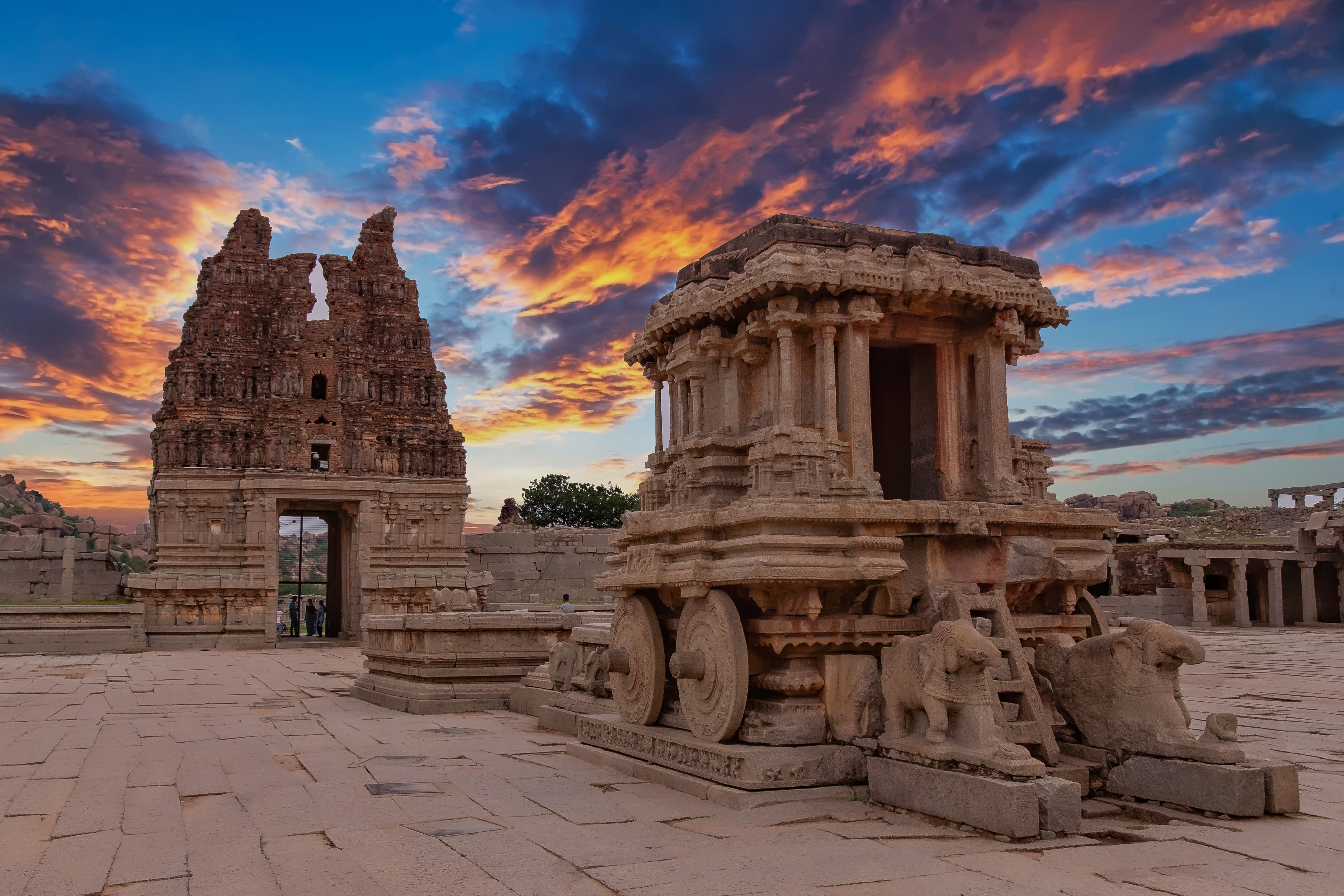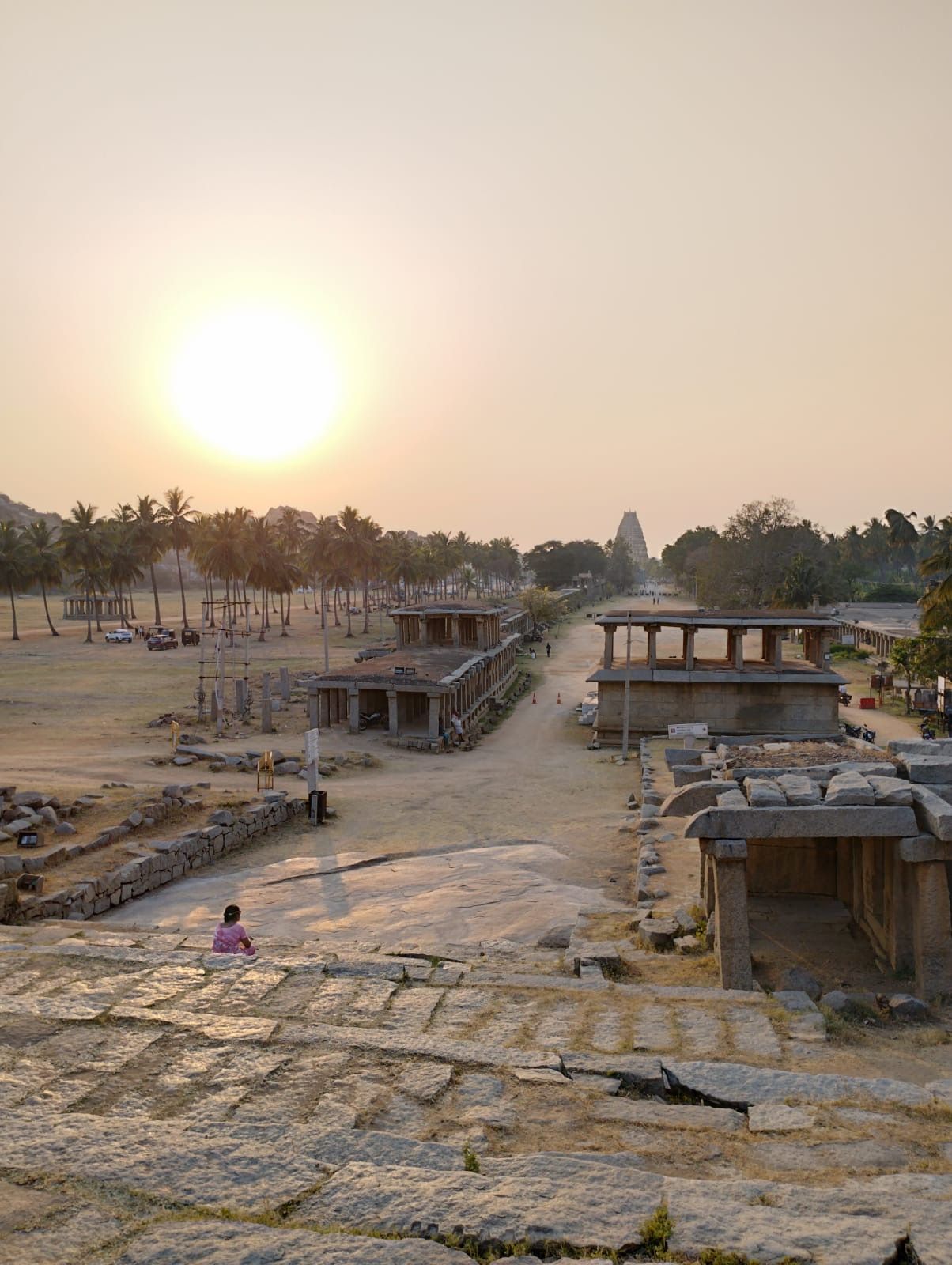5 insights into hampi

1. architectural marvels: a glimpse into the past
Hampi is a living museum of the Vijayanagara Empire’s architectural splendour. With over 1,600 surviving remains, the site is a treasure trove of forts, riverside features, royal and sacred complexes, temples, shrines, pillared halls, mandapas, and memorial structures. The intricate carvings, grand structures, and detailed sculptures are not just remnants of history but narrate stories of a bygone era. Each structure, from the majestic gateways to the intricately carved pillars, reflects the artistic and architectural prowess of the empire. Exploring these ruins, you’ll feel like you’ve stepped back in time, walking through the grandeur of an ancient civilisation.
2. virupaksha temple: a living heritage
At the heart of Hampi lies the Virupaksha Temple, dedicated to Lord Shiva. This temple is not only the oldest shrine in Hampi but also continues to be a significant place of worship, attracting pilgrims and tourists alike. The temple’s main gopuram (tower), soaring 50 meters high, is a landmark that dominates the landscape. Inside, you’ll find a rich tapestry of murals and inscriptions that provide valuable insights into the history and traditions of the region. The annual chariot festival, an event that draws thousands, adds a vibrant touch to the temple’s historical significance.

3. vijaya vittala temple: the pinnacle of architectural brilliance
One of Hampi’s most iconic sites, the Vijaya Vittala Temple, stands as a testament to the architectural brilliance of the Vijayanagara dynasty. The temple complex is renowned for its stone chariot, an intricately carved monument that has become synonymous with Hampi. Perhaps even more fascinating are the temple’s musical pillars. When tapped, these pillars produce musical tones, showcasing the advanced knowledge of acoustics and engineering during that era. Walking through the temple complex, you can’t help but marvel at the craftsmanship and creativity that went into its construction.
4. hampi bazaar: echoes of a bustling marketplace
Imagine a bustling marketplace where traders from around the world once gathered to exchange goods, including precious stones, spices, and textiles. This was Hampi Bazaar, the economic hub of the Vijayanagara Empire. Today, the remnants of the bazaar near the Virupaksha Temple offer a fascinating glimpse into the past. As you stroll through the area, you can almost hear the echoes of ancient trade, see the vibrant activity, and feel the pulse of a thriving market. The nearby monolithic statue of Nandi, the bull, adds to the historical ambiance, reminding visitors of the rich cultural tapestry that once flourished here.
5. matanga hill: a view to remember
No visit to Hampi is complete without a trek up Matanga Hill. This hill offers panoramic views of the entire area, making it a perfect spot for sunrise or sunset. The climb, though steep, rewards you with breathtaking vistas of the ruins and the Tungabhadra River winding through the landscape. Matanga Hill is also steeped in mythology, being associated with the epic Ramayana. From the top, as you gaze out over the ancient structures and boulder-strewn terrain, you can reflect on the grandeur of the Vijayanagara Empire and the rich history that unfolded in this remarkable place.
Embrace the challenge
Cycling from Goa to Hampi is more than just a physical journey; it’s a voyage through history, culture, and breathtaking landscapes. The route challenges you physically and mentally, while rewarding you with experiences and sights that are unparalleled. As you pedal your way to Hampi, each turn of the wheel brings you closer to a deeper understanding of India’s rich heritage and the timeless beauty of its landscapes. So, gear up and get ready to embark on an adventure of a lifetime. The magic of Hampi awaits!

